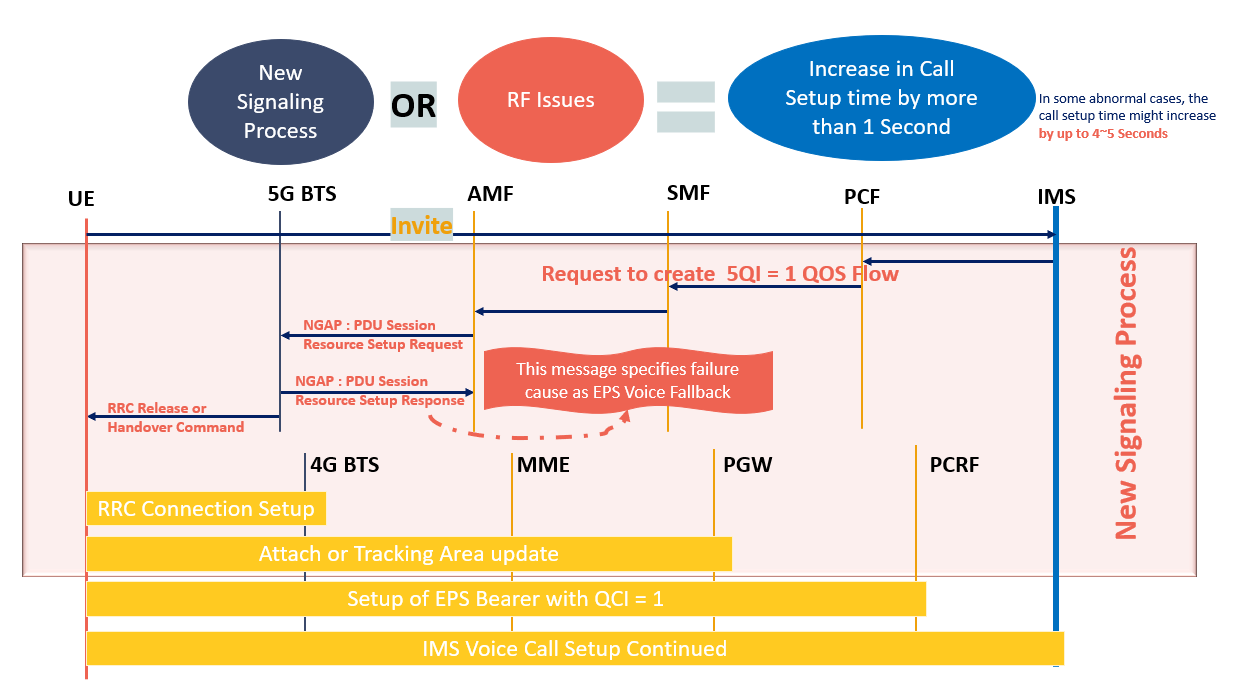5G SA Performance Vs. 5G NSA in the initial phase

This article will cover the main challenges and gains observed during 5G Stand-alone deployment, especially during the initial phase of the 5G Standalone network where the 5G SA Capable devices are still low and only one carrier is being used for 5G Standalone.
Why 5G SA Offers less DL User throughput compared with NSA?
There are 2 factors that will impact 5G Standalone DL User throughput compared to 5G NSA.
1- Extra overhead introduced by CORESET(SIB1)
As you may know, SIB1 is not mandatory in 5G NSA Network, and it also offers much less information compared to 5G SA. Accordingly, more resources will be required in 5G SA to read the SIB1 information over the CORESET0 (PDCCH)
Example 5G SA SIB1 will be covering more extra information such as the following, which is not needed in 5G NSA as 5G NSA is mainly relying on 4G Leg during the initial access.
5G SA SIB1 information example:
- (si-SchedulingInfo: Contains information for other SIBs(Ex. SIB2 si-BroadcastStatus & si-Periodicity)
- ue-TimersAndConstants: Covers related UE Timers such as T300, T301, T310, T319,etc..
Now Let`s try to estimate the expected impact on SIB1 Overhead for different 5G Bandwidths.
As per 3GPP Table 13-4: 3GPP 38213-h40, 5G SA, Use at least 48 up to 96 RBs for SIB1 CORESET0. "Vendors can have slight differences compared to 3GPP."
The examples below consider the following assumption: 8SSBs, SCS 30kHz, SIB1 using 48RBs, SIB1 Periodicity is 20ms, 5G BW is 40~100Mhz.
SIB1(CORESET0) Overhead = Total RBs used by CORESET0 / Total Channel BW in a frame
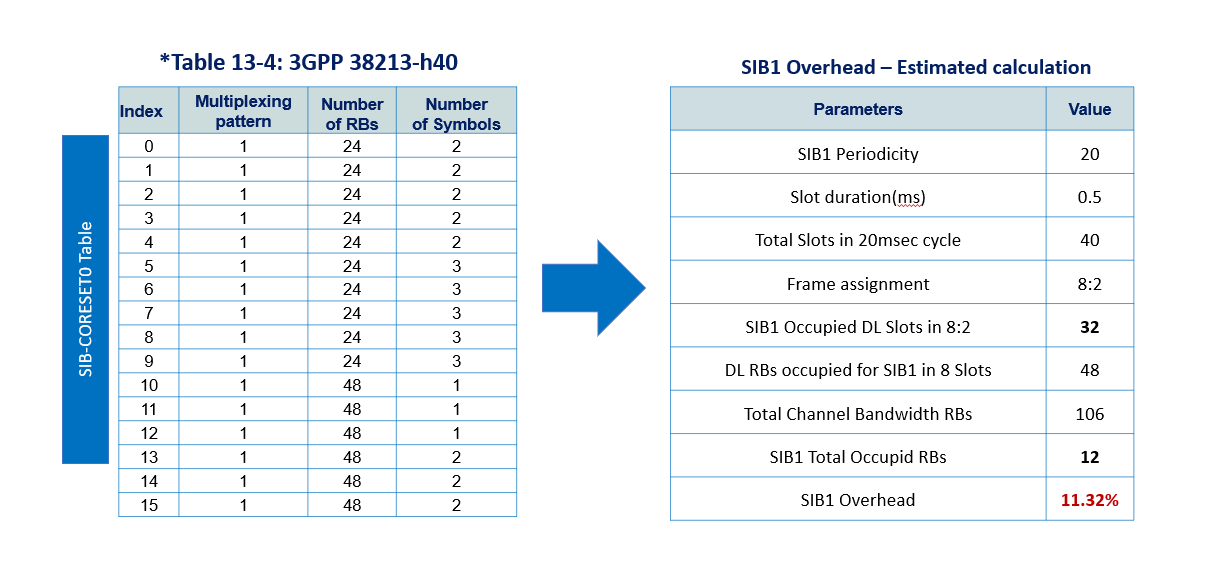
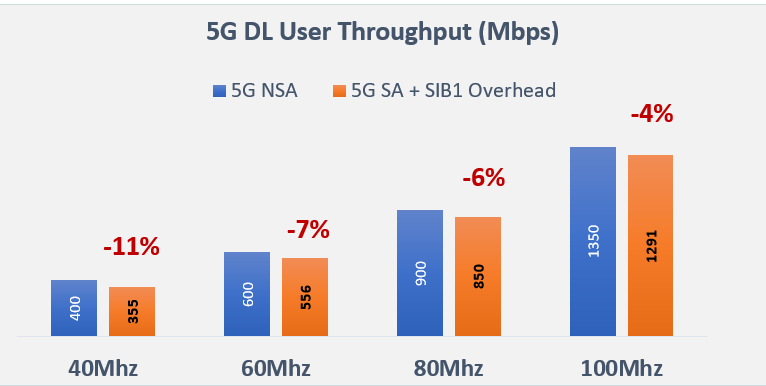
2- No LTE Data Splitting in 5G SA
5G SA Speed will only be generated from 5G Leg.
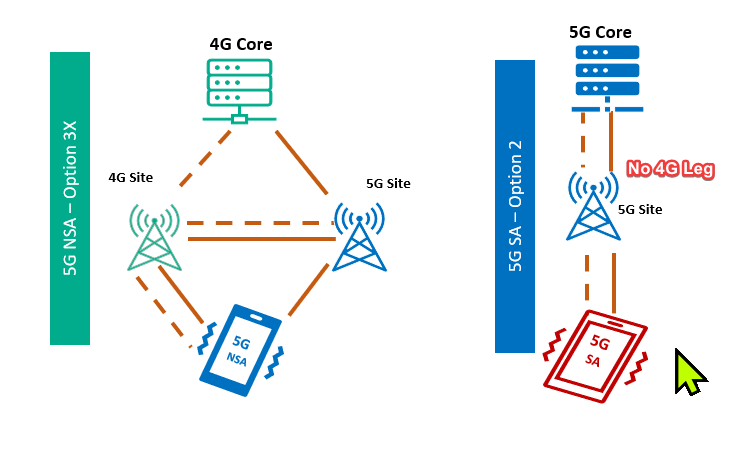
5G SA Maximum DL User throughput will reduce by around 12% when assuming only one 4G Carrier 20Mhz was used in 5G NSA and assuming maximum 5G Speed achieved was 1Gbps for n77 BW:100Mhz
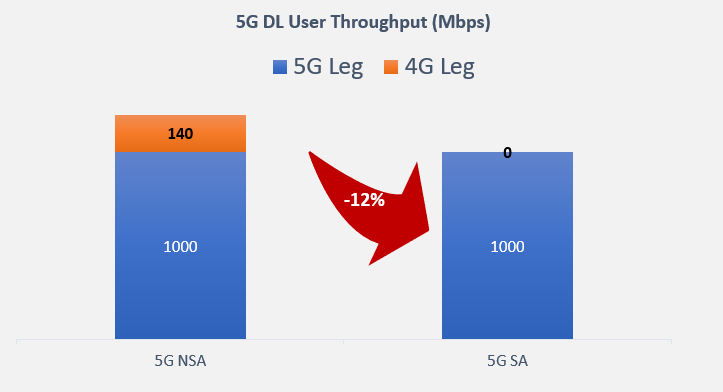
5G Stand-alone offers better UL Coverage and performance compared with 5G NSA
in 5G NSA dual connectivity; the UE utilizes one TX branch for each leg, one TX branch for 4G, and one TX branch for 5G, which will lead to 3dB loss in Tx power for 5G. For example, for UE Supporting a Maximum 23 dB, 5G UE TX Power will be 20dB
On the other hand, 5G SA architecture will offer better UL coverage by around 3dB and better UL speed due to fully utilizing 2 UE TX for 5G, which will add up the power when using the two TX branches.
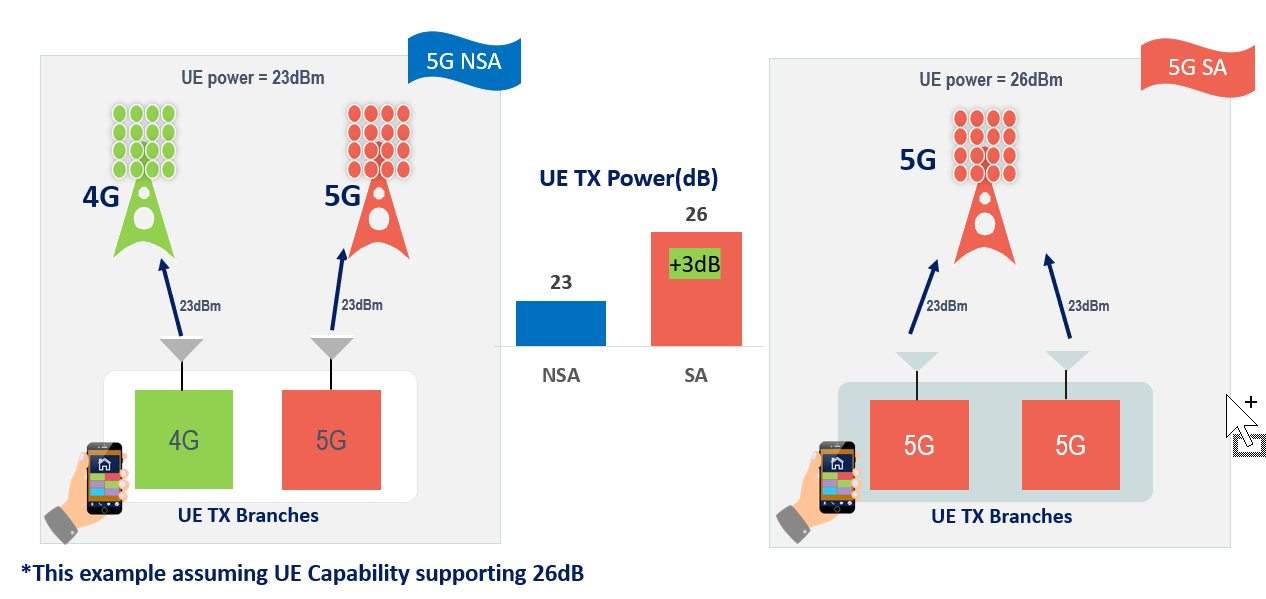
3-Higher Call-Setup time delay in case if VONR not supported
This part will illustrate the high-call setup challenge and the main reasons that might cause high-call setup time delay in 5G Stand-alone.
When UE initiates an IMS voice session through an invite message to establish a Mobile originating call or Terminating call
The 5G Radio access network will receive a PDU session request from the 5G Core Network to establish a QoS stream for voice services.
The 5G RAN will verify whether to allow Voice over 5G by checking specific factors, such as whether Voice over NR is turned on/supported, N26 deployment, and the current radio condition.
Assuming Voice Over NR is not supported, the 5G Radio access network will reply with PDU Session Resource Setup Response. Specifies failure cause as EPS Voice Fallback
After the 5G, BTS will deliver related redirection and handover-related thresholds through the RRC Reconfiguration message and initiate either the RRC Release message or Handover Command based on the type of the EPS Handover.
After completing the RRC Connection setup and once the UE switches to EPS Via N26 Interface, the UE will initiate the Tracking area update process.
In case there is no N26 interface available, the UE will initiate EPS attach message.
All the highlighted signaling Process starting from 5G QOS Service establishment until the Tracking area update is an add-up signaling processes that will increase the call setup time delay by more than 1 second.
In some abnormal cases, the call setup time can increase by up to 5~6 Seconds.
